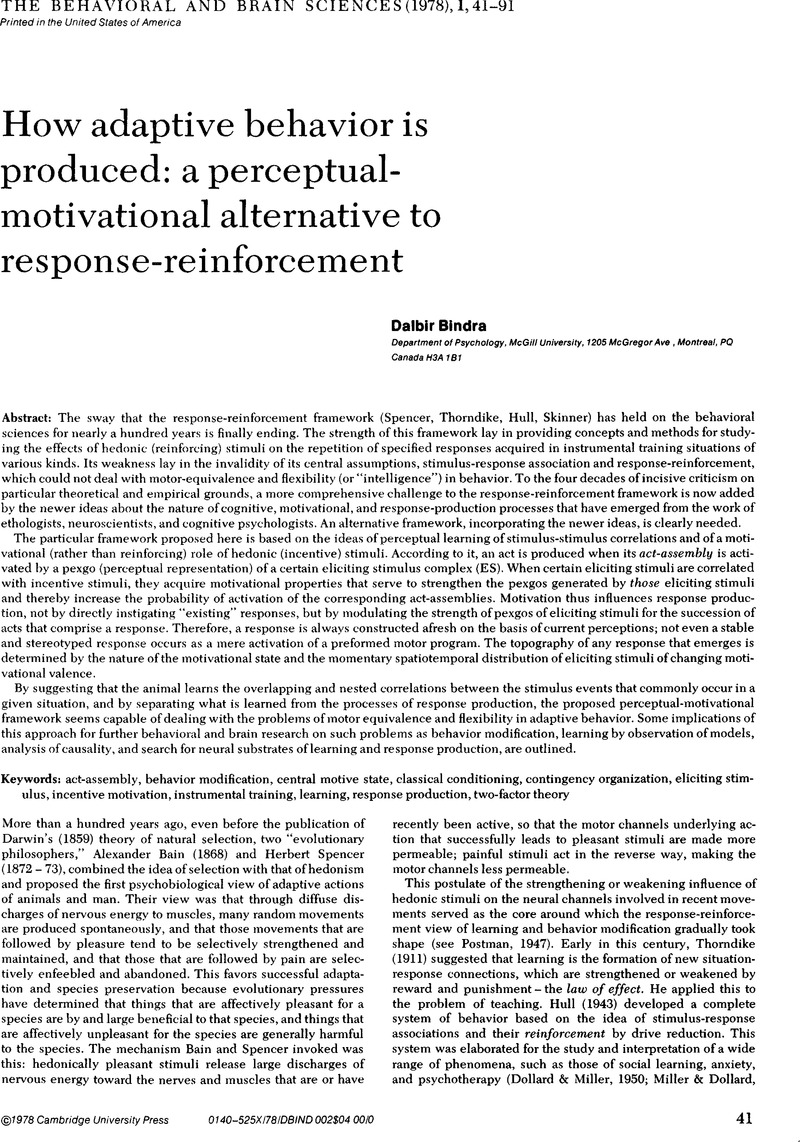No CrossRef data available.
Article contents
Bindra's theory: some successes and precursors
Published online by Cambridge University Press: 04 February 2010
Abstract
An abstract is not available for this content so a preview has been provided. Please use the Get access link above for information on how to access this content.

- Type
- Open Peer Commentary
- Information
- Copyright
- Copyright © Cambridge University Press 1978
References
REFERENCES
Birch, H. G., and Bitterman, M. E.Reinforcement and learning: The process of sensory integration. Psychological Review 56: 292–308. 1949.Google Scholar
Brow, P. L., and Jenkins, H. M.Auto-shaping of the pigeon's key-peck. Journal of the Experimental Analysis of Behavior. 11: 1–8. 1968.CrossRefGoogle Scholar
Maier, S. F., Seligman, M. E. P., and Solomon, R. L. Pavlovian fear conditioning and learned helplessness: Effects on escape and avoidance behavior of (a) the CS-US contingency and (b) the independence of the US and voluntary responding. In: Campbell, B. A. and Church, R. M (eds.), Punishment and aversive behavior. Pp. 299–342. New York, Apple ton-Century-Crofts, 1969.Google Scholar
Skinner, B. F.Two types of conditioned reflex and a pseudo-type. Journal of General Psychology. 12: 66–77. 1935.Google Scholar
Wasserman, E. A.Pavlovian conditioning with heat reinforcement produces stimulus-directed pecking in chicks. Science. 181: 875–77. 1973.Google Scholar
Wasserman, E. A., Franklin, S. R., and Hearst, E.Pavlovian appetitive contingencies and approach versus withdrawal to conditioned stimuli in pigeons. Journal of Comparative and Physiological Psychology. 86: 616–27. 1974.CrossRefGoogle ScholarPubMed
Williams, D. R., and Williams, H.Auto-maintenance in the pigeon: Sustained pecking despite contingent non-reinforcement. Journal of the Experimental Analysis of Behavior. 12: 511–20. 1969.CrossRefGoogle ScholarPubMed
Woodruff, G., and Williams, D. R.The associative relation underlying autoshaping in the pigeon. Journal of the Experimental Analysis of Behavior. 26: 1–13. 1976.CrossRefGoogle ScholarPubMed
Zener, K.The significance of behavior accompanying conditioned salivary secretion for theories of the conditioned response. American Journal of Psychology. 50: 384–403. 1937.CrossRefGoogle Scholar


